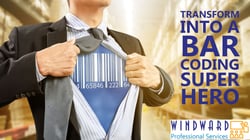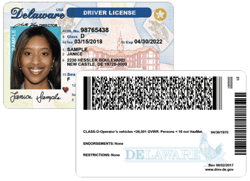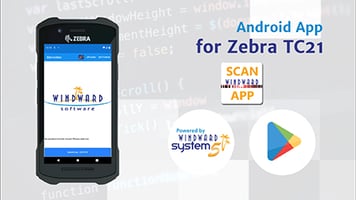The Different Types of Barcodes and How Various Industries Use Them
 Barcodes are everywhere. They're on the products we buy and sell, and even on our packages in the mail. The barcode has even become somewhat of a cultural icon, appearing in movies, television shows, and literature. But what are barcodes? How do they work? And how are they used in different industries?
Barcodes are everywhere. They're on the products we buy and sell, and even on our packages in the mail. The barcode has even become somewhat of a cultural icon, appearing in movies, television shows, and literature. But what are barcodes? How do they work? And how are they used in different industries?
 Barcodes were first developed in the late 1940s as a way to speed up the check-out process in grocery stores. The barcodes were simple lines scanned by a grocery store employee, and the checkout process was sped up because the employee could scan or type in the product number from the barcode rather than look up the product in a flip book.
Barcodes were first developed in the late 1940s as a way to speed up the check-out process in grocery stores. The barcodes were simple lines scanned by a grocery store employee, and the checkout process was sped up because the employee could scan or type in the product number from the barcode rather than look up the product in a flip book.
Barcodes have come a long way since their inception. They're now used in many different ways, including tracking items in a warehouse, tracking packages through the mail, and even tracking patients in a hospital. This blog post will explore the barcode, different types of barcodes, and how they're used in various industries. Keep reading to learn all you need to know about barcodes.
Understanding the Barcode
| A barcode is a machine-readable representation of data about a product. The data encoded in a barcode can include the product's price, weight, date of manufacture, and other information. Barcodes are scanned by barcode readers, which convert the machine-readable data into readable text. This text can then be used to identify the product and track its movement through the supply chain. |
Practical Uses for Barcodes
|
There are various barcode formats, but the most common is the Universal Product Code (UPC). UPC barcodes are composed of a series of bars and spaces of varying widths, which represent a product's unique identifier. When scanned, a barcode reader converts the machine-readable data into readable text, which can then be used to identify the product and track its movement through the supply chain.
Barcodes can track a wide range of product information, including the product's price, weight, date of manufacture, and other information. This information can be used to improve inventory management, as well as to track product recalls and other safety information.
| Barcodes also play an important role in collecting data about customer behavior when paired with barcoding solutions like Windward Software's inventory control software. By tracking the items that customers scan and purchase, retailers can gain insights into what products are most popular, as well as the demographics of their customers. This information can be used to improve product selection and marketing efforts. | 
Read Also: Why You Should Implement Barcode Scanning in your Business |
UPC Barcodes
As we've briefly mentioned, the most common type of barcode is the UPC barcode. UPC barcodes are commonly used in the retail industry. They're generally used to scan and track items in stores, and they can also track items online. They consist of a series of black and white bars that are scanned by a barcode scanner. The scanner will then decode the barcode and read the information that's encoded in it. This information can include the item's price, description, and other information.
|
UPC barcodes are created using a specific format. The barcode consists of several bars, and each bar has a specific width and height. The barcode also includes numerous spaces, and the spaces have a specific width and height as well. The bars and spaces are arranged in a specific pattern, and this pattern encodes the information that's stored in the barcode. UPC barcodes are generally used to track items in stores. When an item is scanned, the barcode scanner will read the barcode and decode it. This will allow the scanner to read the information that is encoded in the barcode. This information can include the item's price, description, and other information. The scanner can then relay this information to a computer system, which will then display it on a screen or send it to a database. |
|
 QR Codes
QR Codes
Another type of barcode is the Quick Response (QR) code. The QR code is a two-dimensional barcode that can be scanned by a smartphone. The QR code is used to encode Uniform Resource Locators (URLs), contact information, and other types of information. QR codes can be used to create coupons, link to product information, and provide other types of information.
QR codes are often used in marketing campaigns. QR codes can be used to create a mobile landing page for a marketing campaign. A QR code can also be used to direct people to a video or a website. With this functionality, marketers can utilize QR codes in many different ways.
For example, a company could use QR codes to create a mobile scavenger hunt. Scavenger hunts are a fun way to engage customers and promote a product or service. A QR code can provide clues for a scavenger hunt at each location or hidden item.
QR codes can also help track the success of a marketing campaign. A QR code can track the number of people who scanned the code and the number of people who clicked on the embedded link. As a result, businesses can gain insight into which marketing campaigns are successful and which need work.
Data Matrix Codes
Data matrix codes are another common type of barcode. Data matrix codes are typically square or rr in shape, and they're composed of small black and white squares. The code is read by scanning it with a special scanner that can interpret the code's binary pattern.

Data Matrix codes are becoming increasingly popular for use in a variety of applications. They're especially well-suited for use in industrial settings, where they can track and store data about the products being produced. The codes can be scanned with a barcode scanner, and the data can be accessed and processed by computers. This allows companies to keep track of their products and ensure that they're being made according to the specifications that have been set.
Data Matrix codes can also store information about the people who are working in a factory. This can include their name, identification (ID) and other relevant information. This can help ensure that the workers are properly identified and that their records are up to date.
Overall, data matrix codes are a versatile and useful tool that can be used in a variety of industrial settings. They provide a way to track and store data about the products and the workers who are producing them. This can help to improve the efficiency and accuracy of the manufacturing process.
Aztec Codes
Aztec codes are a type of barcode that's often used in medical applications to track and store data. The codes are a series of squares that are filled in with different colors to create a pattern. The codes can be read by a scanner, and the data can be decoded using a specific algorithm.
The codes have several advantages over traditional barcodes. They're smaller, which makes them ideal for use in medical applications where space is limited. The codes can store a wide variety of data, including patient information, test results, and medication information. They're also relatively easy to use, which makes them a popular choice for medical applications.
Utilizing Barcodes
As you can see, there are numerous different types of barcodes out there that can benefit all sorts of industries, including retail, shipping, industrial, and medical industries. These barcodes include UPC, QR, data matrix, and Aztec codes. If your business is looking to utilize barcodes to improve your operations and inventory-tracking applications, consider using top-quality barcoding software like Windward Software.
Windward Software clients have many options for implementing and using barcodes in their business
Not a Windward Client yet?
Contact us to see how we can help your business drive operational gains with Windward by your side!
+1(800)663-5750
OR











